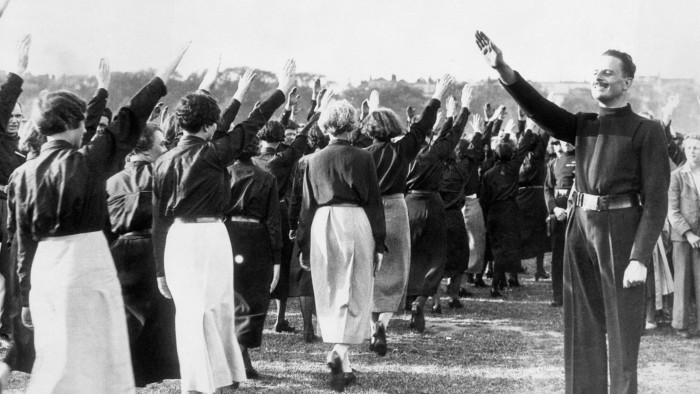Unlock the Editor’s Digest for free
Roula Khalaf, Editor of the FT, selects her favourite stories in this weekly newsletter.
On a recent work trip in Madrid, I picked up a new word: fachaleco. You will not find it in a Spanish dictionary. It is a compound of facha (fascist) and chaleco (vest). It refers, my Spanish informants tell me, to a quite specific sort of vest: a lightweight black or blue ribbed puffer, usually worn over a white shirt and often under a blue suit jacket. On the weekend, it can be dressed down, put on under a green Barbour jacket and over a pair of khakis. The fachaleco is worn by a man of any age who might, typically, work in finance, quite certainly loathes the socialist prime minister Pedro Sánchez, likes laissez-faire economics, dislikes illegal immigration and strongly disapproves of Catalan separatism.
The sketch engages in the grossest kind of stereotyping, but what are clothes for, if not to type us? Before discovering this and other points about the political valence of Spanish menswear, I had been very much admiring the gentlemen of central Madrid, especially the older ones. Many of them cultivate a refined version of classic, Anglo-tinted menswear: subtle tweed jackets with soft shoulders, scarves, pleated cotton trousers, loafers — often, interestingly, American-style penny loafers. Instead of a fachaleco, these sophisticated gents wear a lightweight wool cardigan vest under their jacket.
None of this is very far from the rumpled-Ivy-League-architectural-historian-c1959 look that I cultivate, with mixed success, for myself. But my informants told me that in Spain these get-ups point fairly clearly to one end of the political spectrum. So: What political message am I sending? It’s not that I wish to avoid appearing rightwing. I don’t want my clothing to represent any wing whatsoever.
That said, it is interesting to think about what makes an outfit a political identifier. Certainly, there is a link between overtly traditionalist clothing and the right. After all, tradition is the thing that conservatives want to conserve. And certainly wearing clothes that descend from the country clothing of the British aristocracy suggests a sympathy towards the class system, or aspirations within it, that has a conservative flavour.

There is another element to politically conservative dress: the idea that men’s clothes should clearly mark them as men. In America today this takes at least two forms: tight-fitting clothes that display the shoulders, biceps and thighs (see the straining suit seams of Jeff Bezos and the younger Magas) and deliberately bland clothes (remember the Tiki-torch marchers of Charlottesville, Virginia, defending their racial honour dressed in the khakis and white polo shirts of employees at a printing shop?
To take an extreme example from the UK, recall Oswald Mosley’s fascist Blackshirts. Those shirts were snug through the chest. More importantly, the large, big, shiny belt buckles that went with them drew the attention straight down towards the crotch.
What about stereotypically liberal clothes? Where the right leans towards “trad” clothing sincerely, youngish lefties in my experience will wear it with a frisson of irony or knowing old-timeyness. They also favour Carhartt jackets, flannel shirts and other archetypes of American workwear to show their solidarity with the working classes they only encounter when their car needs fixing. As lefty men age, their style softens into the desexed, soft fabrics and loose fits of the social studies teacher or psychiatrist, all cardigans and shapeless brown shoes. Bernie Sanders is the lefty dressed man par excellence.


All of this speaks to the most basic contrast between liberals and conservatives: attitudes to social difference. Conservatives look at distinctions — between ages, genders, economic classes, nationalities, family roles, and so on — as the things that keep society from falling apart. Liberals see these distinctions as anachronistic inhibitors of individual human potential. And a difference of temperament this fundamental is going to be visible, inevitably, in how we dress. My resistance to this fact is probably futile.
Perhaps there is a business idea here. What about a high-end men’s boutique with clearly demarcated sections, divided by political affiliation? It would save the liberals the embarrassment of inadvertently buying a jacket with a gun club check because they liked the colours, and steer the conservatives firmly away from those comfortable looking, loose-knit jumpers. Perhaps the two sides would eye each other covertly from opposite sides of the shoe department, and discover some common humanity.
Follow us on Instagram and sign up for Fashion Matters, your weekly newsletter about the fashion industry
